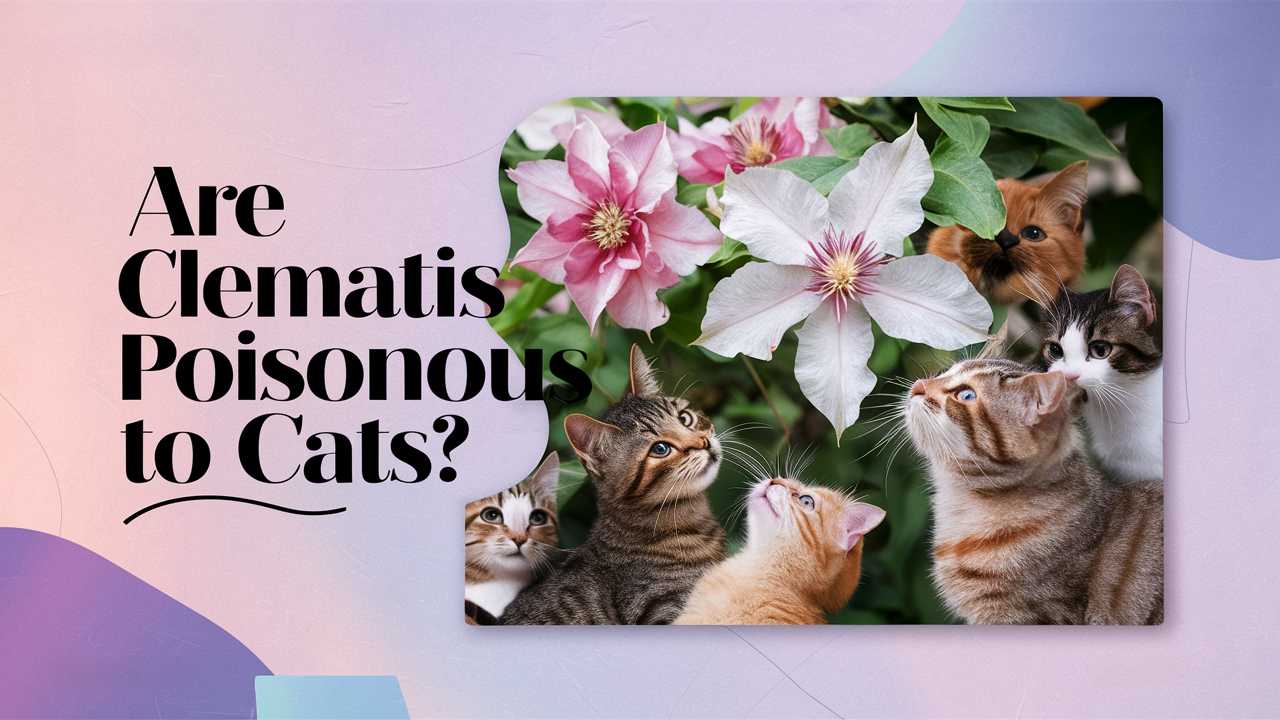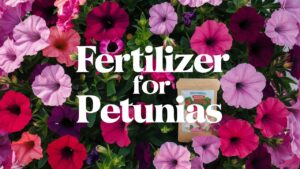Are clematis poisonous to cats? In this comprehensive guide, we’ll dig into the details surrounding clematis, their potential toxicity to cats, and what you should know to ensure your pet’s safety.
Are Clematis Poisonous to Cats?

The most pressing question for pet owners remains: are clematis toxic to cats? According to the ASPCA (American Society for the Prevention of Cruelty to Animals), clematis is not listed among the most toxic plants for cats. However, it’s essential to note that while clematis is not considered highly toxic, it may still pose risks if ingested.
Most toxicological classifications are based on the severity of poisoning, the amount ingested, and the species of the plant. Clematis contains certain compounds that could potentially cause gastrointestinal upset in cats. Symptoms of mild poisoning may include vomiting, diarrhea, and overall lethargy. Therefore, while clematis is not categorized as highly hazardous, it’s wise to monitor your pet’s behavior around these plants.
In-Depth Toxicity Details
To better understand why some plants are deemed toxic, let’s take a closer look at the content of clematis. The clematis plant contains glycosides and saponins, which can lead to mild irritations in the digestive system of cats. Glycosides are organic compounds that can cause symptoms such as nausea and gastrointestinal distress if consumed in substantial amounts.
In general, cats are relatively good at avoiding plants that could harm them, relying on their instincts. Nonetheless, curious cats may still nibble on foliage or petals, which can lead to unintended consequences. It’s prudent to be aware of the symptoms that could arise if your cat ingests any part of the clematis plant.
Symptoms to Watch For

If your cat has tasted a clematis leaf or flower, watch for the following signs:
Vomiting: This could occur shortly after ingestion. Keep an eye out for repeated incidences, which might indicate irritation in their stomach.
Diarrhea: Changes in litter box habits can signal that something is not right in your cat’s digestive system.
Lethargy: If your normally energetic cat becomes unusually tired or inactive, this could be a sign that they are unwell.
Loss of Appetite: Cats may refuse to eat if they are feeling ill, and a sudden loss of interest in food warrants attention.
Excessive Salivation: This might be a response to gastrointestinal upset, as the cat’s body attempts to rid itself of toxins.
If any of these symptoms manifest, it’s important to consult your veterinarian for thorough advice tailored to your cat’s specific situation.
What to Do if Your Cat Ingests Clematis
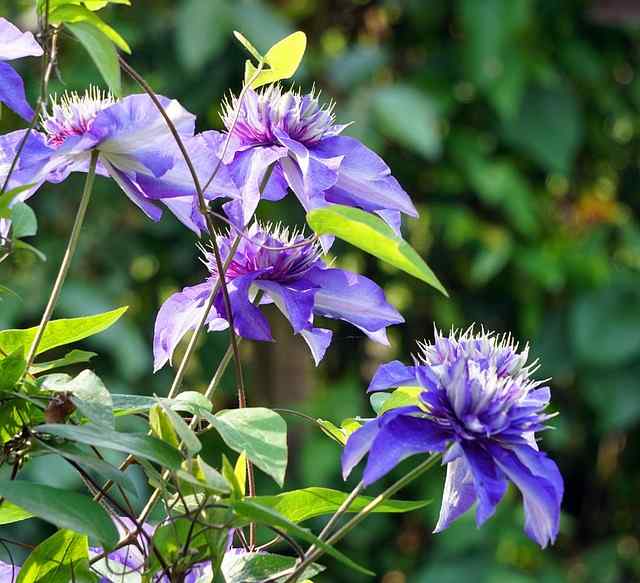
If you suspect your cat has ingested part of a clematis plant, the first step is to stay calm. For many common plants, including clematis, the effects of ingestion can range from mild to moderate and typically do not lead to severe health issues. However, as a responsible pet owner, it’s crucial to take steps to ensure your cat gets the attention it needs.
Observe Your Cat: Keep a close eye on your pet for the next few hours. Take note of any abnormal behavior or physical symptoms.
Contact Your Veterinarian: If your cat exhibits any symptoms or if you are unsure how much of the plant was ingested, don’t hesitate to reach out to your vet. Providing them with specific details about your cat’s behavior can aid in diagnosis.
Familiarize Yourself with Poison Control: The ASPCA has a pet poison control hotline that can be an invaluable resource in emergencies. Having this number handy can save you time during stressful situations.
Avoid Inducing Vomiting: While some cases might require inducing vomiting, do not attempt to do so without professional advice. Improper methods can lead to further complications.
Provide Comfort: If your cat is feeling under the weather, make them comfortable by creating a quiet space with their favorite blanket or bed.
Prevention: Keeping Cats Safe from Plants
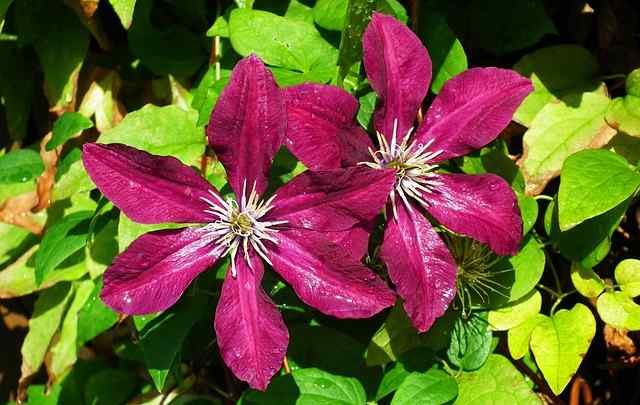
As a conscientious pet owner, ensuring your environment is safe for your cat is paramount. Here are some essential steps to prevent your cat from consuming harmful plants:
1. Research Common Houseplants and Garden Plants
Before bringing any new plants into your home or garden, conduct thorough research. A quick online search can yield a wealth of information regarding the potential toxicity of various species. Having a list of safe plants can significantly lessen the chances of your cat encountering harmful flora.
2. Opt for Non-Toxic Plant Species
Several plants are known to be safe for cats and can enhance your space while giving you peace of mind. Consider exploring options such as spider plants, bamboo palm, and cat grass, which can provide entertainment and a safe-for-consumption alternative.
3. Create Physical Barriers
If you adore clematis and wish to keep them in your garden, consider erecting barriers or planting them in areas where your cat cannot reach. Fencing off garden beds or using hanging planters ensures that your plants can flourish while keeping your whirlwind feline explorer safe.
4. Educate Yourself and Others
Keeping your family informed about plant toxicity is vital for maintaining a safe home. Discuss pets’ safety with visitors or caregivers to ensure that everyone is aware of which plants are in your home and how to keep your furry friends safe.
Alternative Plants to Consider
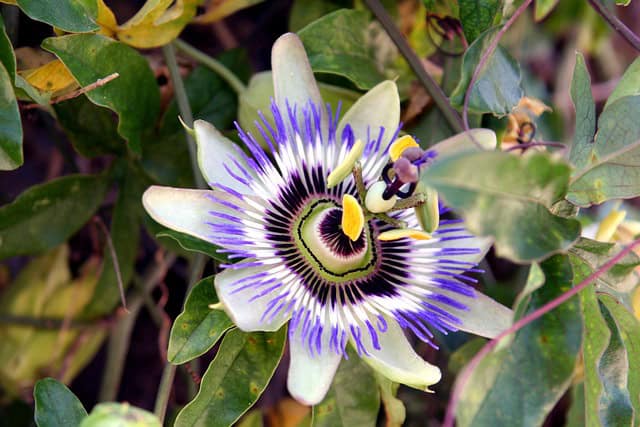
If you’re drawn to the aesthetics of flowering vines but want to ensure the utmost safety for your cats, consider some cat-friendly alternatives. These plants can add beautiful features to your garden while being safe for your pets:
Honeysuckle (Lonicera spp.): This lovely flowering vine often attracts both humans and cats alike. Its fragrant blooms can liven up any garden while posing no risk to your feline friends.
Passionflower (Passiflora spp.): Another beautiful, climbing vine, passionflowers can add a tropical flair to your landscaping. These plants are also non-toxic to cats.
Jasmine (Jasminum spp.): Known for their delightful fragrance, jasmine plants can climb and trail, adding elegance without posing a threat to your feline.
Climbing Roses (Rosa spp.): Besides their stunning flowers, climbing roses serve as a traditional choice for vertical gardens, making them both safe and aesthetically pleasing.
Conclusion: A Garden for Both Cats and Clematis
In summary, while clematis is not highly toxic to cats, caution is always advised when it comes to your pets interacting with any plants. Being proactive, informed, and prepared can help create an environment that respects both your love for gardening and your concern for your furry companions.


